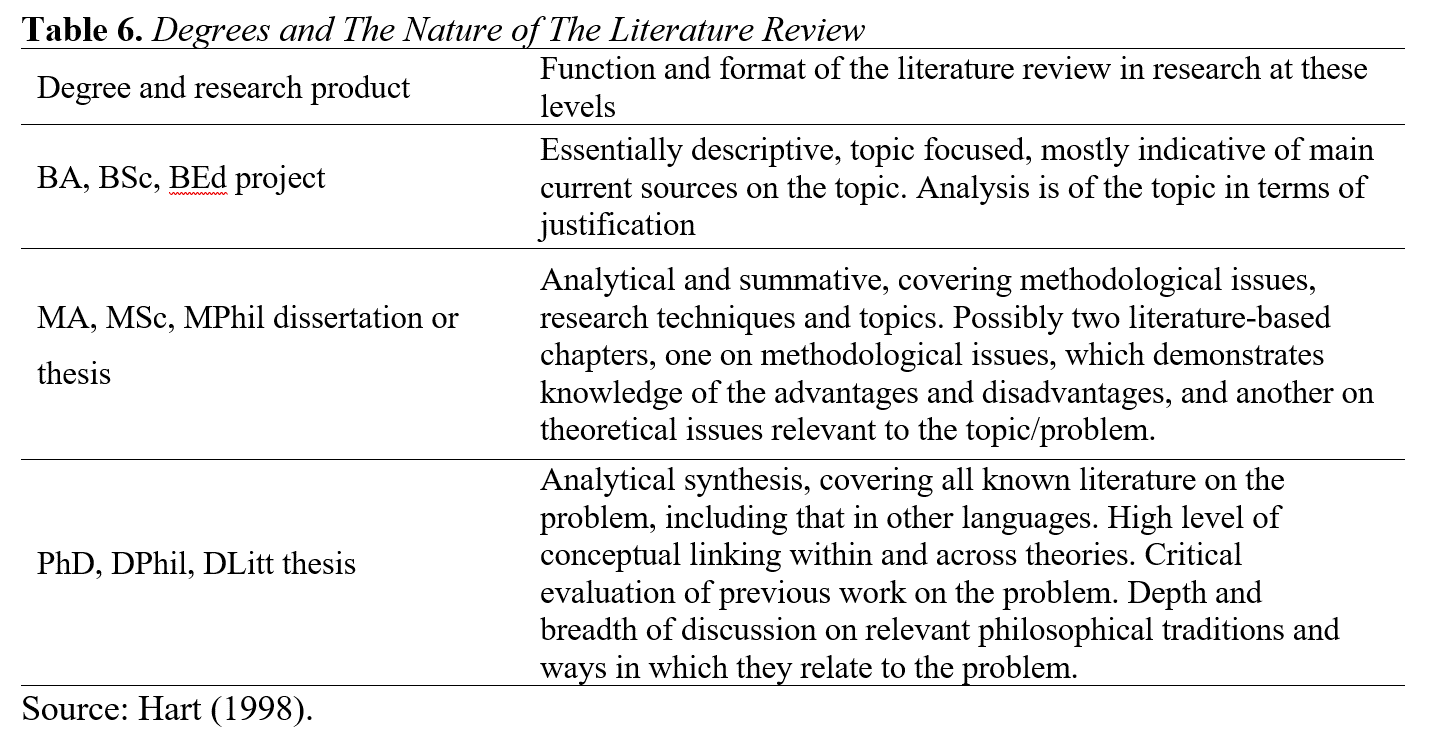Information

A robust literature review serves multiple purposes: it outlines existing research, identifies gaps, and provides justification for your study. A qualified and in-depth research on what has been done about the research topic beforehand will serve as a beacon for the progress of the study. For the subject of barriers in academic publishing, a literature review should examine previous studies on academic publishing processes, authorship challenges, and existing strategies for overcoming barriers (George et al., 2016; Lee & Taylor, 2014). Because of the literature review convince your audience about the importance and the originality of your study, different degree and research products need to different levels of literature reviews. Thus, Hart (1998)’s literature review framework was given as an example in Table 6.

In research, a comprehensive literature review plays a vital role in not only summarizing existing studies but also identifying gaps and defending the necessity of existing work. The depth and scope of the literature review may vary depending on the academic level and type of academic work performed. For example, undergraduate projects often focus on defining the topic and defending its importance, while master's theses may have analytical and summative discussions, several literature-based chapters covering methodological and theoretical aspects. Doctoral theses, on the other hand, require a more comprehensive review that will include an analytical synthesis of all relevant literature, critical evaluation, and in-depth discussions of the philosophical tradition relevant to the problem at hand. This approach ensures that the literature review effectively supports the significance and originality of the research.